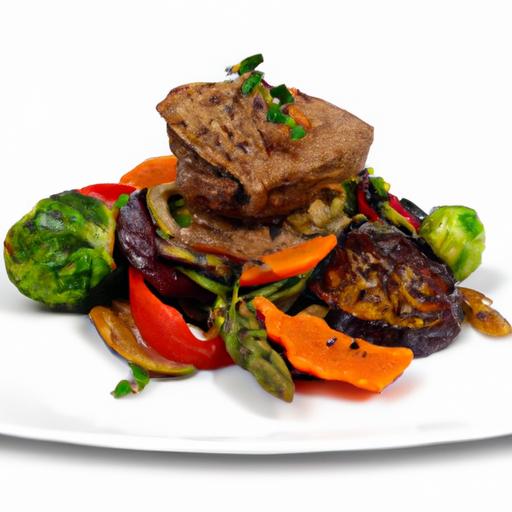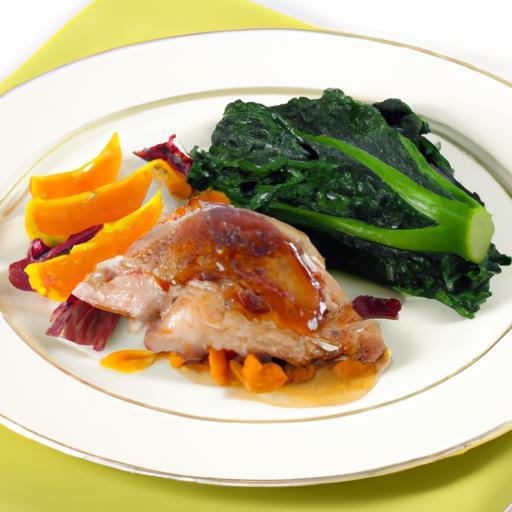In the culinary world, heat is the silent alchemist turning raw ingredients into mouthwatering masterpieces. We often focus on the direct blaze-the roaring flames and searing pans that caramelize and char with dramatic flair. But lurking just beyond the spotlight is a subtler force, one that transforms dishes with gentle patience rather than fiery intensity: indirect heat. Unlocking the mystery of indirect heat reveals a hidden secret of cooking, where slow, even warmth nurtures flavors, textures, and aromas in ways direct heat can’t. Join us as we delve into this understated technique, exploring how chefs and home cooks alike harness its magic to elevate every meal from ordinary to extraordinary.
Understanding the Science Behind Indirect Heat and Its Impact on Flavor
Unlocking the Mystery of Indirect Heat reveals a game-changing approach to grilling that transforms your meats and vegetables into tender, flavorful masterpieces. Unlike direct heat grilling, which can char and dry out food, indirect heat cooks your ingredients slowly and evenly, infusing them with rich smoky aromas while preserving moisture. This gentle cooking method allows collagen in meats to break down beautifully, resulting in juicy textures and enhanced natural flavors that are impossible to achieve over an open flame.
Prep and Cook Time
- Preparation Time: 20 minutes
- Cook Time: 1.5 to 3 hours (depending on meat or vegetable type)
Yield
Serves 6-8 people comfortably
Difficulty Level
Medium – Ideal for intermediate home chefs mastering indirect heat techniques
Ingredients
- 4 lbs bone-in pork shoulder, trimmed of excess fat
- 3 tbsp olive oil
- 2 tbsp smoked paprika
- 1 tbsp garlic powder
- 1 tbsp onion powder
- 2 tsp ground cumin
- 1 tbsp kosher salt
- 1 tsp freshly cracked black pepper
- 1 cup apple cider vinegar
- 1 cup water
- Fresh rosemary sprigs, for garnish
- Vegetables: 4 large carrots, peeled and halved lengthwise, and 3 medium zucchinis, sliced thick
Instructions
- Prepare the rub: In a small bowl, combine smoked paprika, garlic powder, onion powder, cumin, salt, and pepper. Mix thoroughly.
- Season the meat: Rub the pork shoulder with olive oil then generously coat with the prepared spice blend, ensuring every nook is covered.
- Set up the grill for indirect heat: If using a charcoal grill, bank coals to one side. For gas grills, light only half the burners. Place a drip pan beneath the indirect heat zone and add water to maintain moisture.
- Preheat your grill: Target a stable temperature of 250°F (120°C). Patience at this stage unlocks perfect tenderness.
- Begin cooking: Place the seasoned pork shoulder on the indirect heat side of the grill, away from direct flames.
- Maintain temperature: Monitor the grill temperature every 15-20 minutes, adjusting vents or burners as needed to keep the heat steady. Add soaked wood chips for smoke flavor approximately every 45 minutes.
- Manage moisture: Pour the apple cider vinegar and water mixture into the drip pan to create a humid environment inside the grill, preventing the meat from drying out.
- Add vegetables after 1.5 hours: Arrange the carrots and zucchinis on the grill’s indirect side around the meat. Their natural sugars will caramelize slowly, soaking up smoky flavors while roasting evenly.
- Check doneness: Insert a meat thermometer into the thickest part of the pork. When it reaches 195°F (90°C), it’s perfectly tender.
- Rest the meat: Remove the pork and vegetables, tent loosely with foil, and let rest for 20 minutes. Juices redistribute, ensuring a juicy bite.
- Serve: Slice the pork shoulder against the grain. Plate with the roasted vegetables, garnished with fresh rosemary sprigs.
Tips for Success
- Use a reliable grill thermometer to maintain even indirect heat throughout the cooking process.
- Keep a spray bottle of apple cider vinegar handy to spritz the meat occasionally for extra moisture and tang.
- If your grill tends to fluctuate in temperature, consider investing in a heat-resistant digital probe thermometer with Bluetooth alerts.
- For plant-based options, try this method with thick portobello mushroom caps or hearty eggplants for equally satisfying smoky richness.
- Make-ahead: Season your meat the night before and refrigerate to deepen flavors before cooking.
Serving Suggestions
Present your perfectly cooked pork shoulder on a rustic wooden board alongside a bright herb chimichurri or tangy barbecue sauce to complement the smoky layers. Pair with grilled asparagus or a crisp garden salad for a refreshing balance. Garnish with fresh rosemary and a sprinkle of coarse sea salt for that final gourmet touch.

| Nutritional Info (per serving) | Calories | Protein | Carbs | Fat |
|---|---|---|---|---|
| Pork Shoulder & Veggies | 480 kcal | 38 g | 12 g | 30 g |
For a deeper dive into indirect heat techniques and recipes, explore our Grilling Techniques for Beginners guide. Learn more about heat control science from authoritative sources like The National Coffee Association’s Heat Science Overview, which discusses thermal impacts that parallel cooking with indirect heat.
Q&A
Q&A: Unlocking the Mystery of Indirect Heat – Cooking’s Hidden Secret
Q1: What exactly is indirect heat in cooking?
A1: Imagine the heat at a campfire where you’re roasting marshmallows-not right over the flames, but nearby, where the warmth gently cooks the sugar to gooey perfection. Indirect heat works the same way: instead of placing your food directly over the fire or heat source, you cook it adjacent to it, allowing the heat to circulate evenly and cook your food slowly and thoroughly.
Q2: Why should home cooks care about indirect heat?
A2: Because it’s the secret weapon for juicy meats, tender roasts, and evenly cooked veggies. Indirect heat transforms tough cuts into melt-in-your-mouth masterpieces by avoiding the harshness of direct flames or scorching temperatures. It’s like the difference between a sprint and a slow, scenic stroll-both get you there, but one tastes better.
Q3: Which cooking methods use indirect heat?
A3: Indirect heat is the hero behind classic techniques like roasting, smoking, and barbecuing. When you use a grill, for example, closing the lid and placing your food away from the coals or burners harnesses the magic of indirect heat. Oven roasting also relies on indirect heat, where even, surrounding warmth slowly cooks food inside a closed space.
Q4: How can I master indirect heat on my grill or stove?
A4: For a charcoal grill, push the coals to one side and place your food on the cooler side, then close the lid to trap the heat. Gas grills often have multiple burners; light one zone and cook your food on the unlit side. On the stove, use a heavy pan with a lid or a double boiler setup to gently cook without direct contact with the flame.
Q5: What types of food shine when cooked with indirect heat?
A5: Bigger cuts of meat like brisket, whole chickens, ribs, and pork shoulders thrive under indirect heat’s slow and steady approach. Vegetables with denser textures-think potatoes, carrots, and squash-also develop deep, sweet flavors. Even delicate fish fillets benefit by staying moist without the risk of burning.
Q6: Does indirect heat affect cooking times?
A6: Absolutely! Cooking with indirect heat usually means longer cooking times, but the payoff is tenderness and flavor depth that direct heat simply can’t match. Patience is key-think of it like letting a symphony build slowly to its crescendo, rather than blasting the finale immediately.
Q7: Can indirect heat be combined with other cooking secrets?
A7: Definitely! Starting foods over direct heat to sear the outside for flavor and then moving them to indirect heat to finish cooking is a classic technique known as two-zone cooking. It blends the best of both worlds: the charred, caramelized crust and the juicy, tender interior.
Q8: What’s the takeaway for aspiring cooks?
A8: Unlocking the mystery of indirect heat opens up a whole new realm of cooking possibilities. It’s less about battling flames and more about coaxing deliciousness gently out of your ingredients. Embrace the slow burn, and your taste buds will thank you with every mouthwatering bite.
Final Thoughts
As we close the lid on the secrets of indirect heat, it becomes clear that this subtle technique is more than just a method-it’s a culinary compass guiding flavors to their fullest potential. By mastering indirect heat, you unlock a hidden dimension of cooking where patience transforms simple ingredients into smoky masterpieces, and every bite tells a story of slow, tender perfection. So, the next time you fire up your grill or adjust your oven, remember: sometimes the secret to extraordinary cooking lies not in the flame itself, but in the gentle, unseen warmth that surrounds it. Embrace indirect heat, and watch your dishes rise from ordinary to extraordinary.


